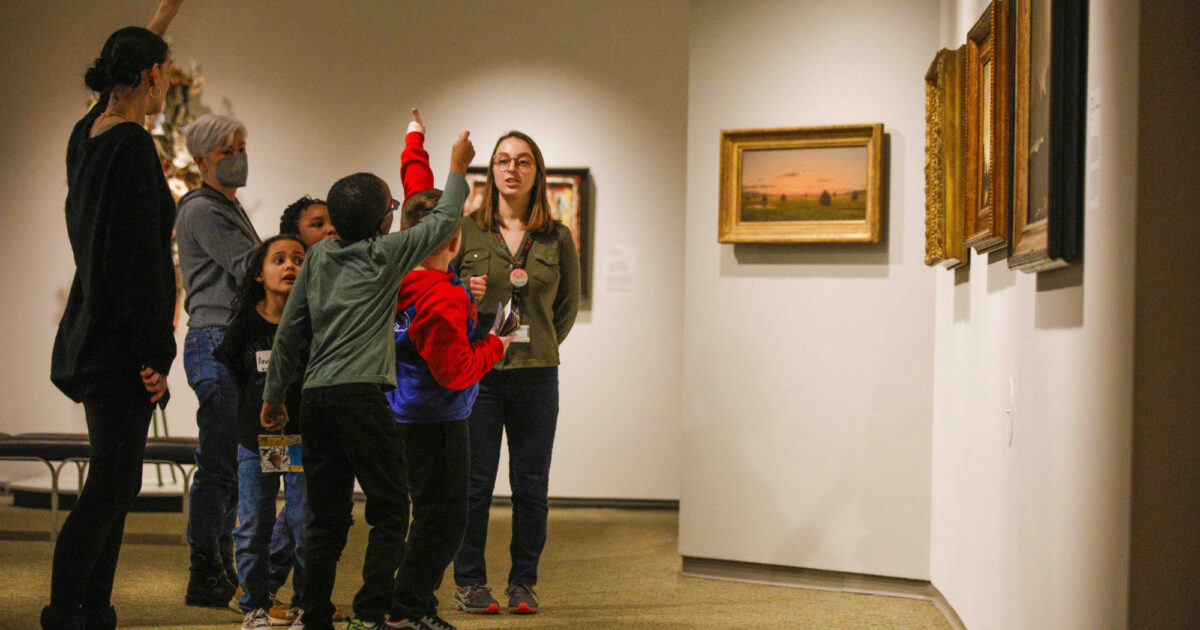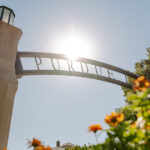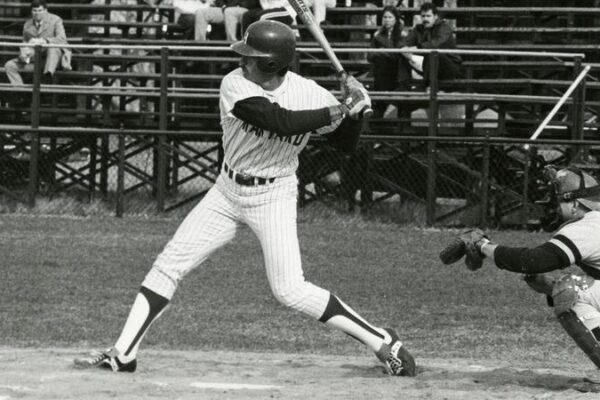An arts partnership inspires young minds
The Memorial Art Gallery and Rochester City School District’s Expanded Learning Collaboration cultivates creativity, curiosity, and connection.
For Zayd, a fourth grader from School #33 in the Rochester City School District, the farm scenes painted by Clementine Hunter spark excitement. “It looks like she painted her life,” he observes during a recent visit to the University of Rochester’s Memorial Art Gallery (MAG).
Around him, classmates eagerly share what they see in Hunter’s paintings hanging on the gallery wall: clouds, trees, angels, and a big house that looks like a farm. After some discussion, the children listen to Kevin Carr, a MAG teaching artist, read Art from Her Heart, a story about Hunter—a self-taught folk artist who began painting in her 50s and who worked her entire life on plantations across Louisiana.
The students then gather around Jacob Lawrence’s Summer Street Scene in Harlem. James raises his hand excitedly. “I see lots of colors,” he says. “They make me happy.” Solene sees a party, while others point out a food cart, shaved ice, and perhaps even a parade. From Beck Ugenti, another teaching artist, the students learn about Lawrence’s life, gaining deeper appreciation for the power of storytelling through art.
A path to empowerment
Since its inception in 2013, classes like this have participated in the Expanded Learning Collaboration (ELC), a free program between MAG and the Rochester City School District (RCSD) that has opened inspirational pathways for local students. Initially created to extend the school day with arts integration, ELC has grown into a multiyear experience that empowers young learners from historically marginalized communities.
For ELC students, art is more than something to look at—it’s a path to understanding, self-expression, and joy. According to Adam Koneman, the Estelle B. Goldman Museum Educator for School and Community Programs at MAG, the program fosters creativity, curiosity, and connection, helping students see art as a catalyst for exploring themselves and the world. They also learn about diverse artists, many of whom reflect the students’ identities, helping them think about their potential.
Each year, the ELC serves hundreds of students in grades 2 through 4, including those receiving special education services. Participating classrooms visit MAG weekly for 90-minute sessions over four consecutive weeks. During each visit, students explore the museum’s diverse collections, engage in thoughtful discussions, and create their own art in the museum’s Creative Workshop. This year, the fourth graders are making journals, illustrating their covers and pages with rubber stamps they’ve made themselves. For many, it’s a favorite part of the program.
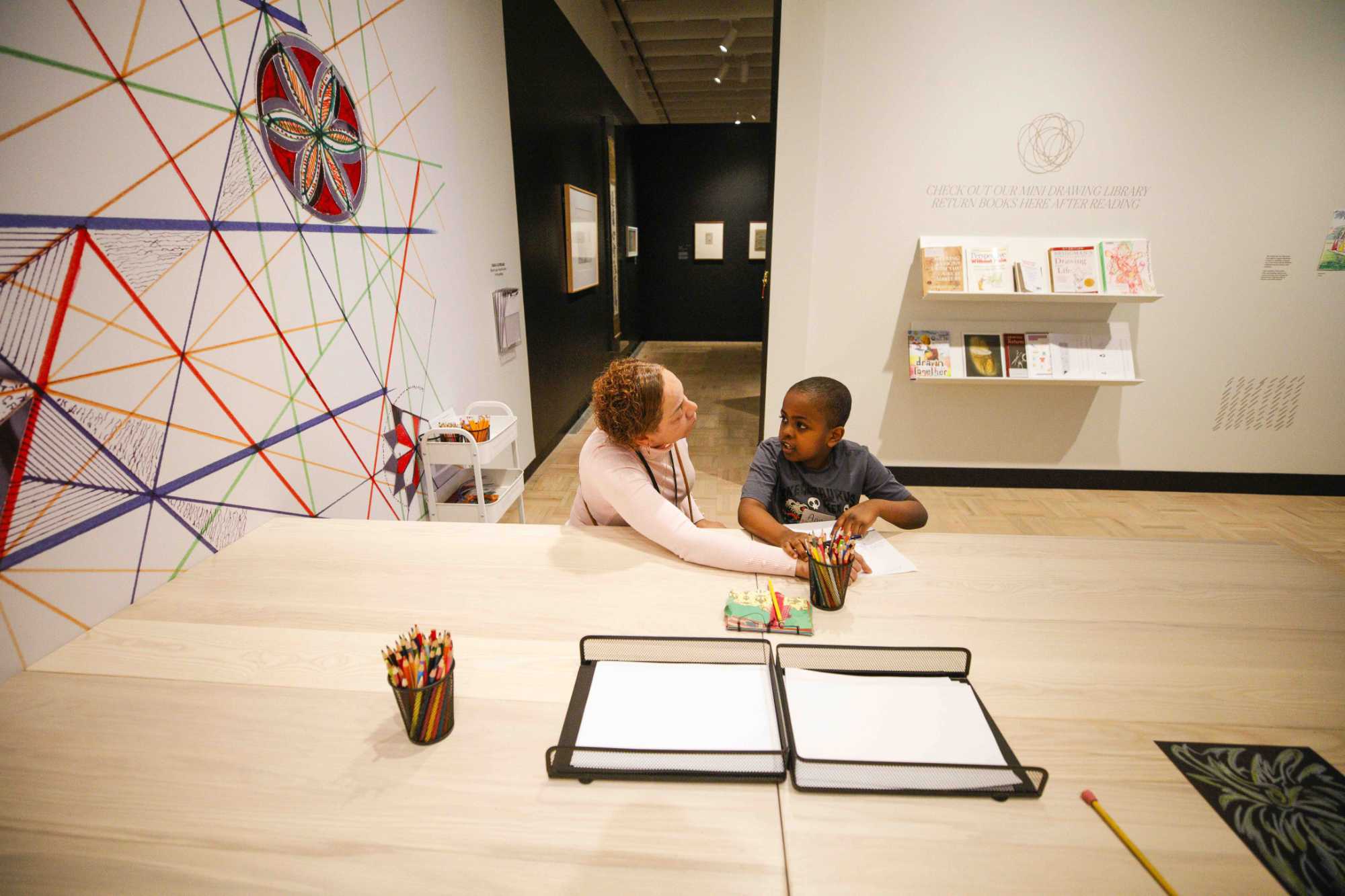
“The kids love it—they really enjoy looking at pieces of art and then creating their own based on what they’ve seen and discussed in the galleries,” says Tracy Plyem, a special education teacher with School #45. “The program gives them a real chance to experience art in a meaningful way and develop their creative brain, which helps them discover new interests and build confidence. They’re genuinely excited to participate—it’s the kind of excitement that can be hard to spark in a traditional classroom.”
Changing young lives forever
A cornerstone of the program is its focus on equity and accessibility. MAG removes barriers by providing transportation, art materials, and trained staff—all at no cost to partner schools. The program also works closely with teachers, offering professional development opportunities to help them weave arts-based strategies into their classrooms.
Sarah Jesse, the Mary W. and Donald R. Clark Director of MAG, emphasizes that art fulfills essential human needs for inspiration and intellectual enrichment—and access to it through educational programs like this can change young people’s lives forever. “We know that kids need basic services—food, clothing, shelter—to survive. But to thrive, they also need food for the soul, food for thought, the kinds of experiences that an art museum like MAG can uniquely provide. By making MAG more accessible through programs like this, we’re providing transformational encounters with works of art that expands worldviews.”
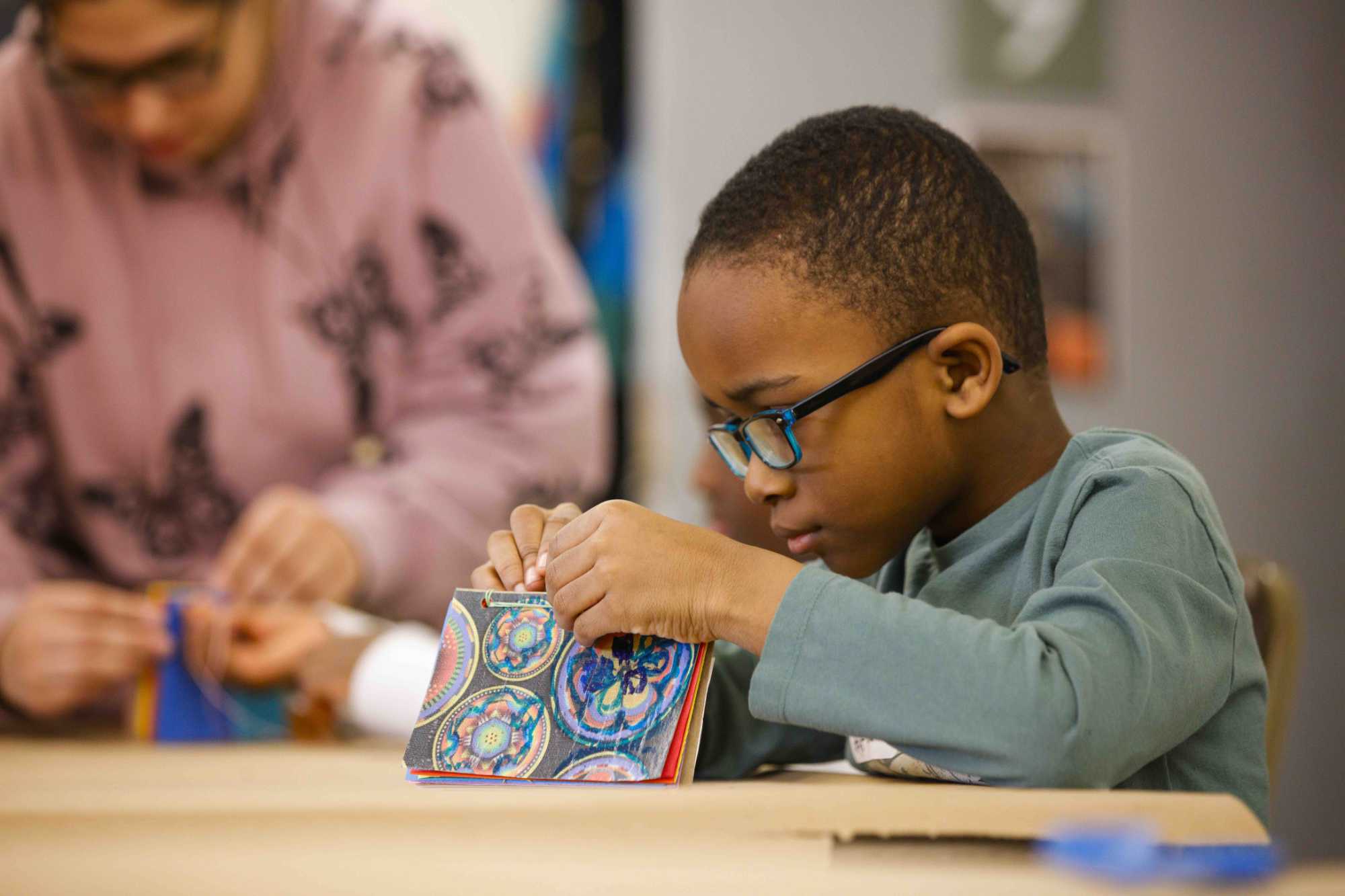
During the academic year, Jesse notes that, in addition to this program, MAG’s galleries are full of students who are here on school tours for what is often their first-ever visit to an art museum. “I love reading the letters we get from kids after they visit because they remind me of the real impact that a field trip can have on a young person,” she adds. “Kids are so receptive to the messages that artists communicate through their work, they’re so game to find meaning in art.”
Research has underscored the impact of arts integration programs like ELC. By integrating the arts, ELC nurtures critical thinking, historical empathy, and social understanding. With curated lesson plans and high-quality materials, ELC promotes visual literacy and deep engagement. Teachers report seeing quieter students come alive, too, and notice them sharing ideas and connecting with peers in new ways.
A win for all
Initially piloted in one RCSD school, ELC now includes three schools—#19, #33, and #45—and is guided by external evaluations, teacher feedback, and collaboration with the University’s Warner School of Education and Human Development. Recent enhancements emphasize social-emotional learning and improved accessibility, reflecting the program’s ongoing evolution.
Looking ahead, MAG is exploring ways to bring ELC experiences to schools that cannot visit in person. It has also introduced initiatives to engage students’ families, including free family passes, community days, and programs designed to increase museum access for underrepresented groups.
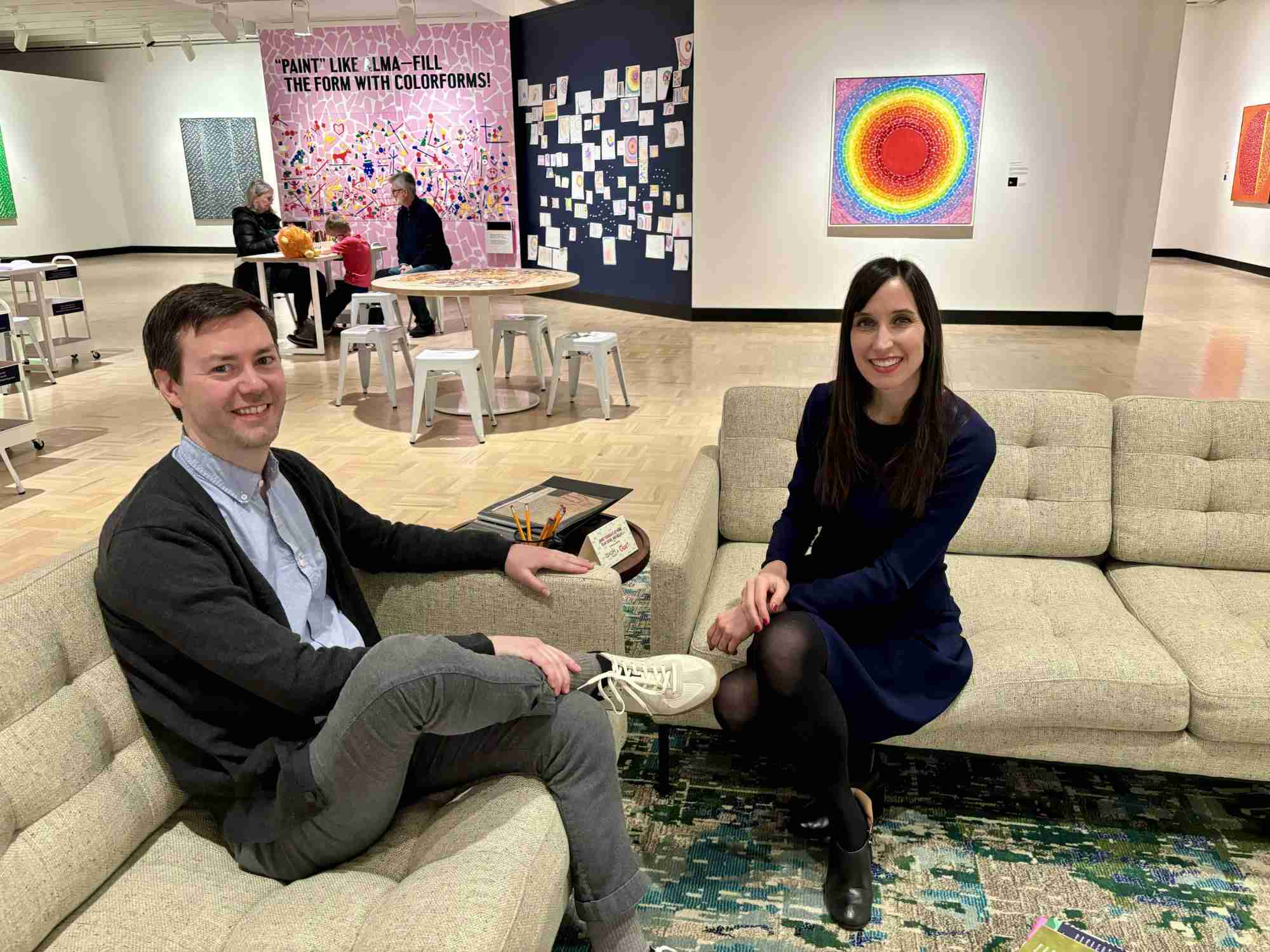
Koneman says that these steps help ensure that MAG remains a space where students and their families can connect with their community and embrace a lifelong interest in art. By the time students complete the program in fourth grade, they have developed creative skills, a sense of agency, and significant connection to the museum—a win for all involved.
“Museums are the rare spaces where we can go and have the reasonable expectation of having a sort of epiphany—where we can expect to see something we’ve never seen before or be exposed to a new idea,” says Jesse. “Art is an infinite resource, so we have an obligation to share our museum generously, welcoming everyone in our community, young and old, rich and poor.”
The MAG-RCSD Expanded Learning Collaboration is made possible by generous support from the William and Sheila Konar Foundation and M&T Bank, with additional support from an anonymous donor, and the estate of Rosemary Christoff Dolan. Funding is also provided by the Guido and Ellen Palma Foundation, the Wan Jou Family Foundation in memory of Shi-Ling C. Hsiang, and Deborah Goldman. Find a full list of sponsors.









